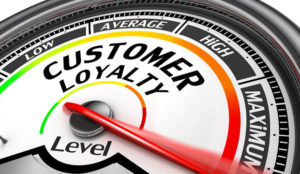Important as it is to continually acquire new customers, it’s every bit as vital for businesses to nurture existing clientele.
The E-Commerce Times talked with several experts in customer engagement to get their thoughts about why it’s critical to cultivate current customers — and how to encourage them to stick around.
“Assuming that a firm has a recurring revenue model — SaaS, maintenance, retainers, or repeat sales — then customer retention is just as important as new customer acquisition,” Candyce Edelen, CEO and founder of PropelGrowth, told the E-Commerce Times.
“In fact, the cost of customer retention is a small fraction of the cost of customer acquisition. This is particularly true for any model where the CAC isn’t recovered in the first couple months of the customer lifecycle,” she offered.
Worth the Cost
Not focusing on customer engagement and retention can ultimately end up unraveling all the work that goes into acquiring those customers in the first place.
“Businesses that don’t focus on customer retention and nurturing those relationships are really shooting themselves in the foot,” explained Edelen. “Nurturing existing customers can have a huge payoff in reducing churn, improving lifetime customer value, and encouraging referrals, references and positive word-of-mouth.”
Given the costs associated with acquiring customers, it just makes sense to try to keep them.
“The cost to acquire a transaction on platforms such as Amazon continues to go up,” Kunal Chopra, CEO of Kaspien, told the E-Commerce Times.
“In addition, freight costs have been increasing substantially globally. This has put pressure on profit margins for marketplace businesses, so gaining loyal, repeat customers is a great way to increase a customer’s lifetime value relative to the cost to acquire a new customer,” he added.
The pandemic, as well, has made nurturing existing customers more of a priority than ever.
“Covid has pushed more brands to sell online, which has increased competition for sellers,” said Chopra. “In addition, Amazon itself has over 5 million sellers, so it’s vital for sellers to retain loyal customers and market share.”
Trust and Rewards
Establishing a sense of trust is one of the key components of successful customer engagement.
“Eroding trust through a poor customer experience is one of the most surefire ways to lose out on a repeat customer,” explained Chopra. “For example, if a customer receives the wrong item after ordering on Amazon and reaches out to you for a solution, be sure to provide them with one.
“Depending on the Amazon fulfillment method, they may need to contact Amazon for a solution, but if they have reached out to you as the seller, do all you can to help them. Avoid just deferring them to Amazon because it’s ‘Amazon’s fault they received the wrong item.’
“They’re still your customer, so treat them as such and you may just gain a loyal customer by providing them with an excellent experience. The same goes for any online marketplace.”
It’s also important for businesses to remember to give some attention not just to new customers, but to existing ones.
“I’m always shocked when companies offer discounts or rewards only for new customers,” explained Edelen. “They’re basically telling existing customers, ‘We don’t care about you.’
“Customer support sometimes falls short when the firm doesn’t hire the right talent or give them sufficient training. Outsourcing support is often a customer relationship killer. To change this, make customer retention just as high a priority as customer acquisition. Train teams to be effective in this area; set goals and KPIs, and reward success just like you track and reward sales.”
Building Community
Ultimately, one of the best methods of engaging and retaining existing customers is to create a sense of community that extends beyond products and services.
“Brands and businesses should be aiming to build a tribe-like community, which is something I personally cherish when supporting or consuming a brand and its products,” Matthew Hayes, managing director of Champions (UK), told the E-Commerce Times.
“As much as it’s about a brand’s product or service, it is just as much about the experience of the entire process, personalization and a human-to-human approach. Whilst we’re living in an era of immense digitalization, brands shouldn’t forget that they are targeting people, not robots, and to bear this in mind when communicating with consumers,” he advised.
That community, in turn, helps to create repeat customers — since the customers’ identities are woven in with the brand itself — and it also helps businesses to understand what kinds of rewards and incentives might work best for particular customers.
“Knowing how much and how often a customer spends with a brand provides them with the opportunity to offer rewards, discounts, and other incentives, which will also lead to repurchases,” said Hayes.
“As well as this,” he continued, “sending a valued customer a handwritten note or message can also go a long way — whether it’s a simple ‘thank you’, giving them early access to a new launch, or offering them a referral incentive.”
Beyond the Sale
Customer engagement involves thinking beyond the initial sale and into the future relationship with each customer.
“Brands need to understand that the sale is only halfway through the customer experience, and that they must spend the same amount of effort and attention to the after sales experience as they do to new customer acquisition,” stressed Hayes. “This will drive repeat orders and brand advocacy.”
“It is clear that the future of customer engagement and retention will take place online and in a variety of digital forms,” he added. “The future is just that — digital.”
A large part of the success of digital engagement is the degree of personalization it allows and facilitates.
“The number-one thing is personalization,” according to Hayes.
“In an increasingly complex and socially distant world, humans need more personalized communication from their digital product providers, not less. It is about using automation, digitalization and data insights to deliver a personalized and tailored service to customers, anticipating and meeting their needs instantaneously and in ways that feel unique to them.
“One thing that I urge brands and business to focus on is the needs of consumers. If you constantly provide a product or service that meets the ever-changing needs of consumers, you can’t go too far wrong,” he concluded.



























































